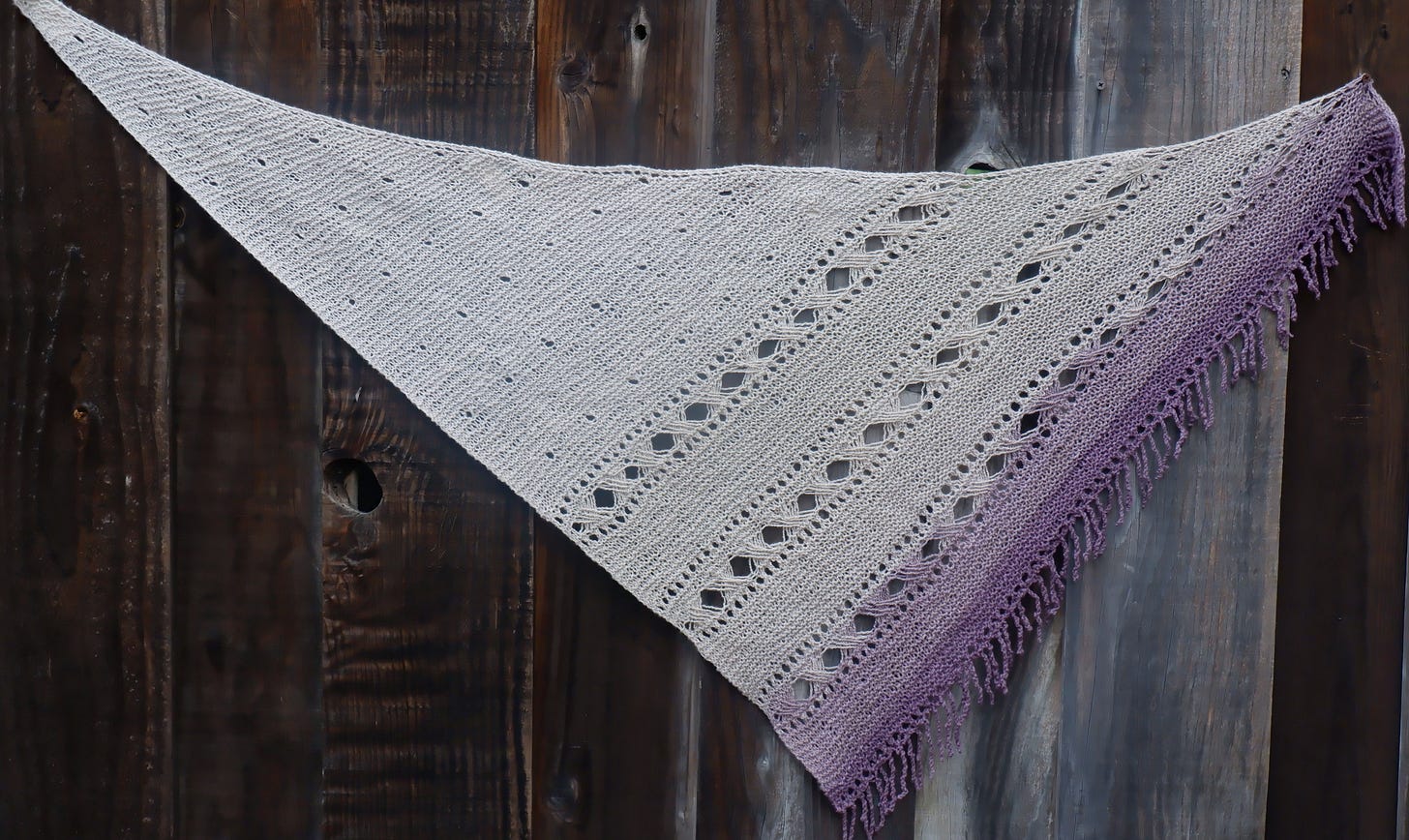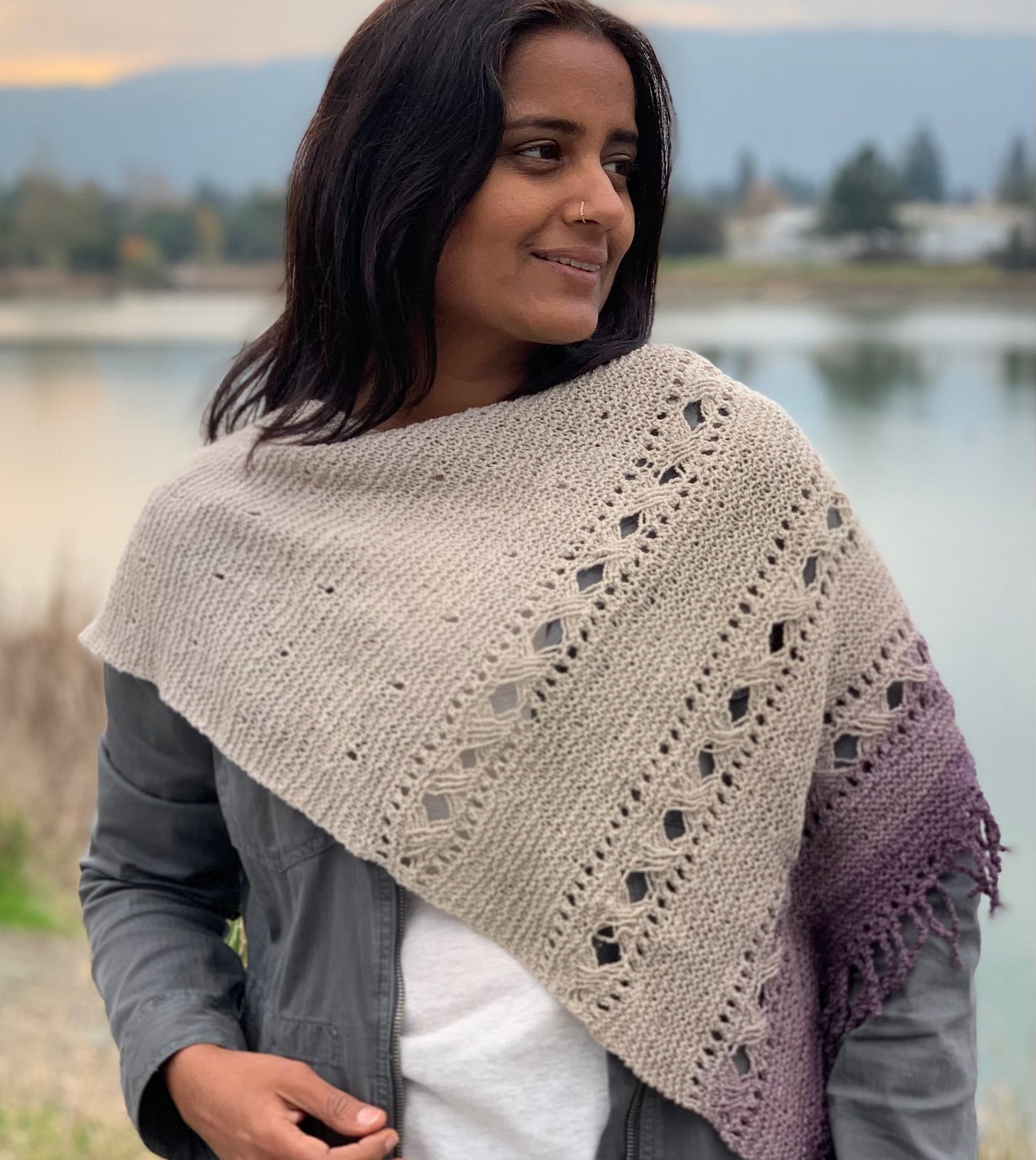No Perfect Time to Knit Your First Sweater
How to know you’re ready and what to practice first, CraftDoodling Designs News, etc.
I’m often asked by beginner knitters, who’ve just learned to knit and purl, whether they can knit a sweater. On the other hand, I also meet knitters who’ve tried everything except garments.
I was one of those who jumped into sweater knitting early in my knitting journey. Admittedly, I didn’t produce masterpieces right away, but I kept experimenting with a variety of projects until I could consistently knit sweaters that fit well.
There’s no hard rule for when to start garment knitting. But when I reflect on my own experience, I realize I could have approached it a bit differently. If you’re contemplating your first garment, or have already tried one or two without much success, here are a few things worth considering.
Watch Your Fabric Tension
I’m not talking about achieving the exact gauge for a specific pattern, rather I mean your general tension.
Are you able to produce even, consistent stitches? If you’ve only worked with one yarn weight so far, try knitting with a few others. It’s a good idea to make at least one non-garment project using the same yarn weight you plan to use for your sweater.
Techniques to Learn
Knitting is a lifelong journey, and there’s always more to learn. But to knit a simple sweater, you only need a handful of techniques: ribbing, increases, decreases, and knitting in the round. Practice these in smaller projects. Hats are a great place to start.
While you’re at it, learn to fix basic mistakes and read your knitting.
Can you tell knits from purls?
Can you recognize a decrease stitch?
Also, learn how to use stitch markers and lifelines for different purposes, and get into the habit of keeping notes as you go.
If you like my newsletter, please consider sharing it with a friend. ♥️
Know Your Measurements
One thing that holds even experienced knitters back from trying garments is the fear of fit. If you’re investing time into knitting a sweater, it’s worth spending a little of that time understanding measurements.
I admit, it can be overwhelming. There’s a lot of information out there. But you can start small. Just focusing on two or three key measurements related to your project can make a big difference. Even that small effort can result in a garment that fits far better than most store-bought pieces.
Learn to measure yourself, and also measure parts of your favorite store-bought garments. This helps you understand your fit preferences. With that knowledge, you’ll be able to fine-tune your handknits to suit you perfectly.
Your First Project
My first sweater was an all-over lace sweater. No, I don’t have a picture of it.
I’ll say this: do yourself a favor and keep your first sweater simple and manageable. Choose something you can easily pick up during the day to knit a few rows and feel like you’re making progress. It’s important to finish your project in a reasonable amount of time and feel good wearing it.
And yes, it’s worth being able to take a picture of yourself wearing it.
No “Best time”
Lastly, If you’re ready to begin, go for it! There’s no perfect moment—just your moment. ♥️
Tell me about your first sweater, or the one you are planning to knit. I’d love to hear all about it in the comments. ♥️
To let me know you liked what you read, you can also press the little heart icon at the bottom of the newsletter. ♥️ However, if you are clicking it from your inbox, you might have to wait until Substack opens in a browser and make sure the heart icon is indeed red. Thanks! 🥰
CRAFTDOODLING DESIGNS UPDATES
Chalana Socks and Shuffle Scarf are currently being tested and I am happy to watch the tester versions growing slowly.
I have been fairly productive over the last week, swatching and working out preliminary calculations for a few designs. I cannot talk about some of those yet but I will have some updates on others next week.
I also might have bought some sparkly yarn on impulse and started a crochet top for DD. 🥰
FEATURED PATTERN
Reed Shawl is one of my favorite mostly mindless shawl that uses a lot of garter. The border gets interesting with open cross stitches a twisted fringe border.
Reed Shawl is available for download on Ravelry.
OTHER THINGS YOU MIGHT LIKE
READING UPDATES
Finished Reading 📖
The Grey Wolf - Louise Penny
Currently Reading 📖
The Boyfriend - Freida McFadden
Until next time,
Kavitha. ♡
Currently, this newsletter is free to subscribe. If you like my work, please consider these other ways to support:
Click the ❤️ at the bottom of this post. If you are reading from your email inbox, this will open substack in web browser. Please allow it to open and make sure you see the red heart.
Share your thoughts in comments. I am here for the conversations. I hope you are too!
Introduce this newsletter to a friend!
Buy my patterns. I hope you find something you like.
I accept any of these with immense gratitude. Thank you!








My first project was a sweater. I didn’t know any other knitters (so it took me about two years to learn how to knit from a booklet that wasn’t really very clear), so no one told me my first project should be something like a scarf or a washcloth. Once I knew how to knit, purl, do ribbing, increase, and decrease, I figured I knew everything I needed to make a sweater. I found a “very easy very Vogue” Calvin Klein pullover pattern, found yarn I liked that I could afford (there was so much yarn I loved that I couldn’t afford then. I was a poor college student. And a fiber snob. But I found some wool that was ok), and made the sweater. It turned out fine. And since then, I’ve never been without a project in the works for more than a few days while I figured out what to make next. Now, of course, I have about 100 projects in my Ravelry queue, and enough yarn to last a lifetime.
My first ever knitting project was a sweater! Decades ago I saw an article in the newspaper advertising “everything you need to knit this sweater” so I sent away for it. I assumed it would come with yarn, pattern, needles, and instructions on how to knit. After all, it did say it came with “everything!” Talk about naive!
Obviously it came with the yarn and pattern only. So I went to my local Kmart to buy needles and a learn-to-knit book. I bought two sets of straight needles (the sizes they recommended in the pattern…I knew nothing about gauge…), and a how-to-knit booklet.
I had to start off with ribbing (no clue about gauge swatching) for the bottom-up sweater so I had to teach myself to knit AND purl right off the bat (in the days before YouTube!). I remember thinking to myself, how important can it be to do exactly k1 p1 for the ribbing. I soon discovered it was quite important as I began noticing my ribbing was looking decidedly un-ribbing-like. So I ripped it out and started over.
It had a basket weave design so I got lots of practice with knits and purls. I finished it and miracle of miracles, it fit! And I was hooked!
Soon after I took a knitting class and noticed the teacher knitting differently from the way my booklet taught me. I asked her about it and she told me the technique is Continental knitting. I immediately saw the advantage of her style and switched right in the middle of my project from English style knitting to Continental.
One of my early purchases was a set of interchangeable needles. I knew I loved this craft so much that I wanted to invest in good tools. I could see the disadvantage of having lots of sizes of straight needles and thought interchangeable circulars were the way to go.
This all happened 36 years ago and I still love to knit!